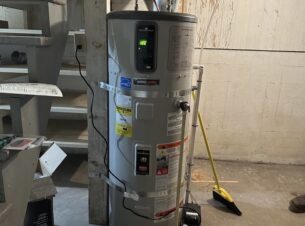In the dynamic realm of global commerce, the key to efficient logistics and seamless trade lies in leasing the containers that have redefined the movement of goods across oceans and continents. These resilient metal giants have become the backbone of modern trade operations, revolutionizing how businesses transport their products. In recent times, an increasing number of businesses are recognizing the advantages of opting to lease shipping containers rather than committing to ownership. This comprehensive article delves deep into the myriad benefits that stem from leasing the containers, exploring the diverse container types, demystifying the leasing process, and illuminating vital considerations for a well-informed choice.
Advantages of Leasing Shipping Containers
Leasing shipping containers offers several advantages that make it an attractive option for businesses of all sizes.
- Cost-Efficiency: Leasing containers can be more cost-effective than buying them, especially for short-term or seasonal needs. The upfront cost of purchasing containers can be substantial, while leasing allows businesses to allocate resources more efficiently.
- Flexibility: Leasing provides flexibility in terms of container quantity and types. As your business needs change, you can easily adjust the number and sizes of containers leased without the commitment of ownership.
- Maintenance and Repairs: When you lease shipping containers, the responsibility for maintenance and repairs often falls on the leasing company. This saves your business time, effort, and potential repair costs.
- Upgraded Equipment: Leasing enables access to the latest container technology. As the industry evolves, newer container models with improved features become available, and leasing ensures your business stays up-to-date.
- Cash Flow Management: Leasing containers helps preserve your business’s working capital. With lower upfront costs and fixed lease payments, you can allocate resources to other areas of your operation.
Types of Shipping Containers for Lease
Shipping containers come in various sizes and configurations to accommodate different cargo and logistical needs. The most common types include:
- Standard Dry Containers: These are the traditional steel containers used for transporting dry goods. Available in 20-foot and 40-foot lengths, they are suitable for a wide range of cargo types.
- Refrigerated Containers: Also known as reefers, these containers are equipped with temperature control mechanisms, making them ideal for transporting perishable goods like food and pharmaceuticals.
- Open-Top Containers: These containers have removable tops, allowing for easy loading of oversized cargo that wouldn’t fit through standard container doors.
- Flat Rack Containers: Designed for heavy or bulky items, flat racks have collapsible sides that make loading and unloading easier. They are often used for construction equipment and machinery.
- Tank Containers: These specialized containers are designed to transport liquids, gases, and chemicals safely. They come with built-in tanks made of stainless steel.
The Leasing Process
Leasing shipping containers involves several straightforward steps to ensure a smooth transaction:
- Needs Assessment: Determine your specific cargo requirements, including size, type, and quantity of containers needed.
- Research and Comparison: Research reputable container leasing companies and compare their offerings, lease terms, and customer reviews.
- Request a Quote: Reach out to selected leasing companies for quotes based on your requirements. Make sure to clarify any questions or concerns you have regarding lease terms.
- Lease Agreement: Once you’ve chosen a leasing company, carefully review the lease agreement. Pay attention to terms, responsibilities, maintenance, and insurance provisions.
- Delivery and Inspection: The leasing company will deliver the leased containers to your specified location. Thoroughly inspect each container for any damage or issues and document them.
- Lease Duration: Containers can be leased for varying periods, such as short-term, long-term, or even on a month-to-month basis. Choose the lease duration that aligns with your business needs.
- Return Process: At the end of the lease term, the containers will be picked up by the leasing company. Ensure the containers are in the same condition as when they were delivered to avoid any additional charges.
Key Considerations for Container Leasing
When leasing shipping containers, there are essential factors to keep in mind to make an informed decision:
- Leasing Company Reputation: Opt for a reputable leasing company with a track record of reliability and excellent customer service.
- Lease Terms and Conditions: Thoroughly review the lease agreement, including payment terms, responsibilities for maintenance and repairs, and any potential penalties.
- Insurance Coverage: Determine whether the leasing company provides insurance coverage for the leased containers or if you need to arrange separate coverage.
- Container Condition: Inspect the containers before signing the lease agreement and document any existing damage to avoid disputes later.
- Lease Duration: Choose a lease duration that aligns with your business needs and operational timeline.
- Additional Costs: Clarify any potential additional costs, such as delivery fees, pick-up charges, and penalties for exceeding weight limits.
- Customization Options: Inquire about customization options, such as branding or modifications to meet specific cargo requirements.
Container Maintenance and Care
Proper maintenance and care of leased shipping containers are essential to ensure their longevity and optimal performance. Here’s what you need to know:
- Regular Inspection: Conduct routine inspections of leased containers to identify any signs of wear, rust, or damage. Promptly address any issues to prevent them from worsening.
- Cleaning and Sanitization: Keep containers clean and free from debris to prevent contamination of cargo. Proper sanitization is crucial, especially for containers carrying food or sensitive goods.
- Weather Protection: If containers are placed outdoors, consider using weather-resistant coverings or shelters to shield them from harsh environmental conditions that can accelerate wear and tear.
- Rust Prevention: Apply rust-resistant coatings to the container’s exterior and inspect the container’s interior for rust-prone areas. Address rust promptly to prevent it from spreading.
- Door Maintenance: Regularly lubricate container doors and hinges to ensure smooth operation. Properly functioning doors prevent delays during loading and unloading.
Economic and Environmental Impact
Leasing shipping containers not only offers financial advantages but also contributes to sustainable business practices:
- Reduced Capital Outlay: Leasing containers minimizes upfront capital expenditure, freeing up funds for other business investments and growth opportunities.
- Lower Environmental Impact: By leasing containers instead of purchasing new ones, you contribute to the reduction of manufacturing demand, energy consumption, and raw material extraction, thereby lowering your carbon footprint.
- Reuse and Recycle: Leasing encourages the reuse of existing containers, extending their lifespan and reducing the need for new container production. At the end of their useful life, containers can be recycled, further reducing environmental impact.
Scaling Your Container Fleet
As your business expands or undergoes changes, the ability to scale your container fleet becomes crucial:
- Flexible Scaling: Leasing allows you to easily scale your container fleet up or down based on changes in demand, without the constraints of ownership commitments.
- Geographic Expansion: When expanding to new markets or locations, leasing provides the flexibility to acquire containers tailored to specific regional requirements.
- Temporary Projects: For temporary projects or seasonal fluctuations, leasing enables you to quickly acquire additional containers without the need for long-term investments.
Comparing Leasing to Owning
While leasing offers numerous benefits, it’s important to briefly compare it to container ownership:
- Cost Structure: Leasing involves predictable monthly payments, whereas owning containers requires a higher upfront investment and potential maintenance costs.
- Flexibility: Leasing offers greater flexibility to adapt to changing needs, while ownership might lead to underutilized containers during slow periods.
- Maintenance: Leasing often includes maintenance services, saving you time and effort compared to managing maintenance for owned containers.
- Long-Term Commitment: Ownership involves a longer-term commitment, while leasing allows you to adjust your container fleet based on evolving business requirements.
Conclusion
Leasing shipping containers is a strategic decision that can positively impact your business’s efficiency, cost-effectiveness, and sustainability. By understanding the advantages of leasing, the various container types available, the leasing process, and key considerations, you’re equipped to make an informed choice that aligns with your company’s goals. The benefits of cost-efficiency, flexibility, maintenance support, and access to the latest container technology make leasing an attractive option for businesses involved in global trade and logistics. As you embark on your container leasing journey, remember to prioritize proper maintenance, explore environmental benefits, consider scalability, and make thoughtful comparisons between leasing and ownership to ensure the success of your cargo transportation operations.




Join the conversation: